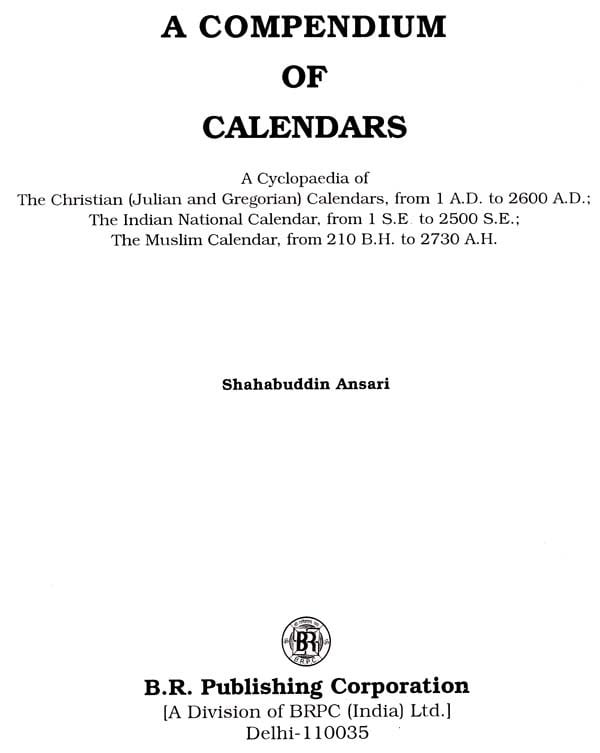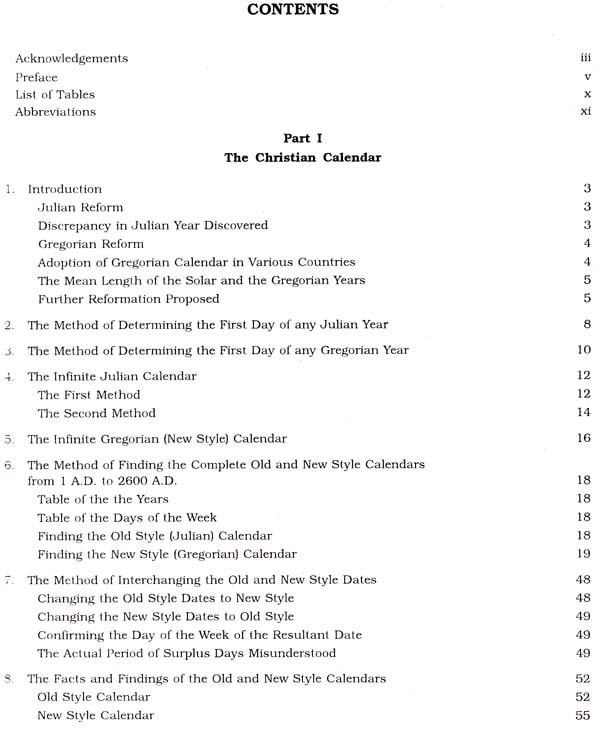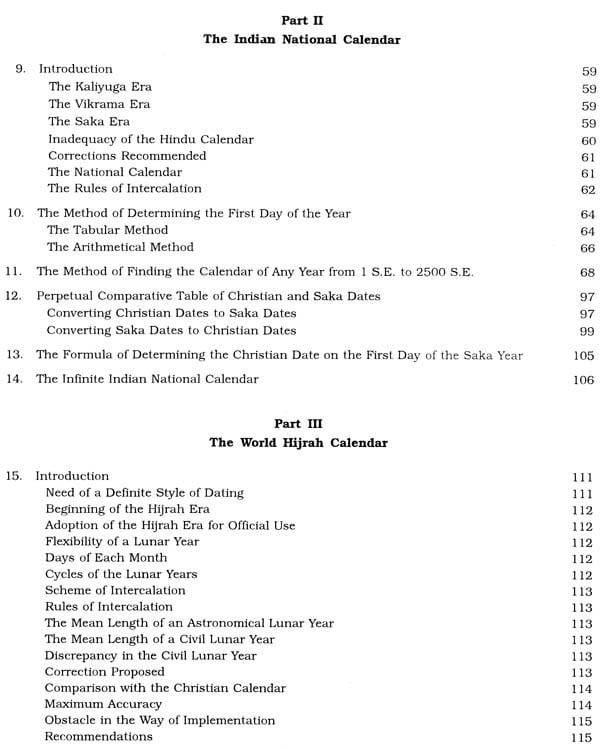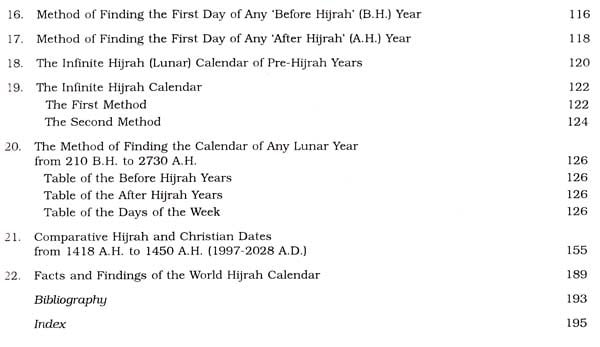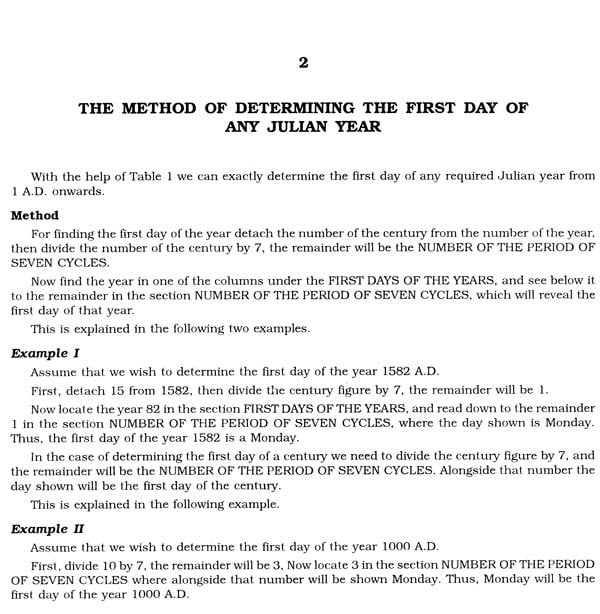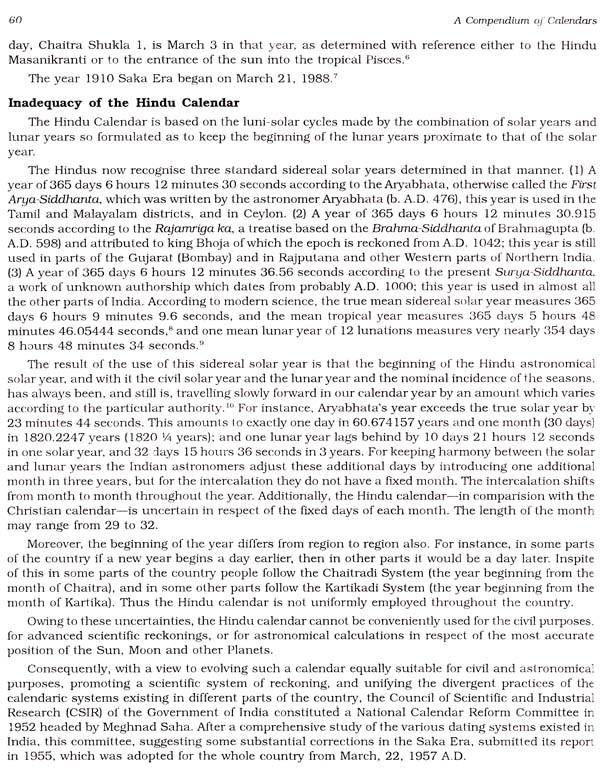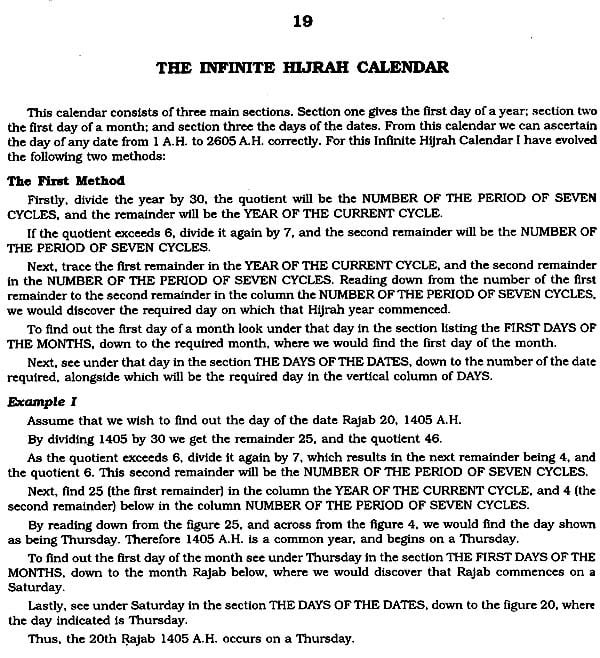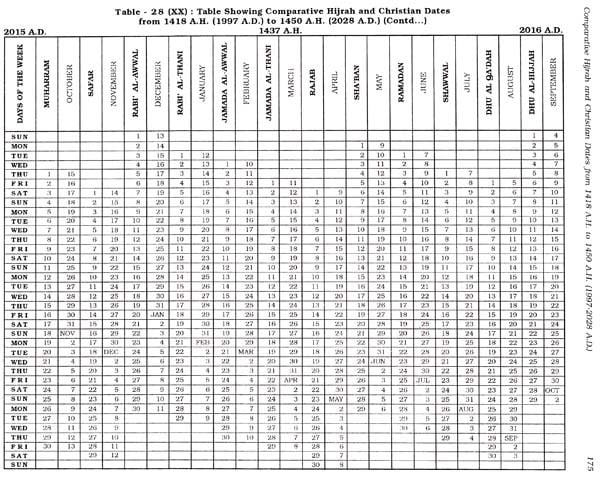
A Compendium of Calendars
Book Specification
| Item Code: | AZE617 |
| Author: | Shahabuddin Ansari |
| Publisher: | B.R. PUBLISHING CORPORATION |
| Language: | ENGLISH |
| Edition: | 1999 |
| ISBN: | 9788176460880 |
| Pages: | 206 |
| Cover: | HARDCOVER |
| Other Details | 11.00x9.00 |
| Weight | 780 gm |
Book Description
The author is of the view that the extant books on the topic are not very comprehensive and analytical. Moreover, the method adopted is more problematical and time-taking too. For the sake of making it comparatively more informative, easy-to-use and time-saving, author thought it worthwhile to construct a completely new work to meet all the desiderata.
This Compendium of Calendars has been prepared after considerable study and labour with the hope that it will be useful to the students and the scholars as well as the layman alike.
So far a series of articles, exclusively based on these volumes have appeared in the MWL Journal, Saudi Arabia; Hamdard Islamicus, Pakistan and Islamic Culture, Hyderabad. Moreover, the author has been associated with International Islamic Calendar Programme (IICP), conducted by Associate Prof. Dr. Mohammed Ilyas, Astronomical Research Unit, University of Malaysia. In 1989, the author got a chance to participate in a Conference-cum-Workshop on Internationa lisation of Islamic Calendar held at Jamia Hamdard, New Delhi, convened by Dr. Mohammed Ilyas.
The author is also an ordinary member of the Muslim Association for the Advancement of Science, Aligarh. In June 1994, he was invited to participate in a Science Oriented Camp held at Khandala, Pune.
In 1997, he was chosen for his disting uished standing and has been conferred with an Honorary appointment to the Research Board of Advisers by the Governing Board of Editors, and Publications Board of the American Biographical Institute, Raleigh, North Carolina, USA.
The author is also an Editor of Weekly Al Hijr. Amongst his varied activities he is also a bibliophile.
The contradictory versions of the historians in respect of the date of birth of the Holy Prophe (peace be upon him) in Hirah as well as in the Christian Era date prompted me to study various dating systems to search for the truth. But I thought that this task cannot be accomplished without a thorough knowledge and study of the related calendrical systems. Therefore, presently for my intended andy I have ninded out mainly two dating systems-the Christian Calendar consisting of Old and New style, and the Muslim Lunar or Hijrah Calendar. Though the Saka or Indian National Calendar is not a part of my study, but being a National Calendar of India have also dealt with it in detail.
Source of Information
The Information on which the present study is based has been derived mainly from primary and authentic sources. The most important of these are Encyclopaedia Britannica, Volume IV and V. Miftahut Taqweem. Comparative Tables of Christian and Islamic Dates and the Muslim and Christian Calendars. During the course of my study I could discover that these books are not very comprehensive and analytical, Moreover, close examination revealed that the extant books had very inadequate information.
On a number of material points and had considerable printing errors and several inaccuracies, which put a question mark on the credibility of these works.
Moreover, the method adopted is more problematical and time-consuming and difficult to be followed by the common man. For the sake of making it comparatively more informative, interesting. easy-to-use, and time-saving I thought it worthwhile to construct a completely new system to meet all the desiderata. Therefore, towards the fulfilment of these objectives I have evolved my own methods of presentation of facts and also designed all calendrical and allied tables in my own way on the basis of empirical knowledge attained during the course of my study.
Plan of Study For the purpose of an analytical study, the whole gamut of the subject matter is completed in five parts. The first three parts are exclusively devoted to the Christian, Saka and Hijrah Calendars consisting of 22 chapters in all. These three parts consist of in one volume THE COMPENDIUM OF CALENDARS The remaining two parts exclusively deal with the conversion of the Hijrah and the Christian dates, which I intend to put in another separate volume.
In order to restore harmony between the civil and astronomical equerries Julius Caesar abolished the use of the Lunar Year, and the intercalary month, and regulated the civil year entirely according to the sun, and on the advice of an Alexandrian astronomer, Sustgenes, he fixed the mean length of the year at 365 days, and 6 hours, which in those days was in practice in Egypt. He further decreed that every fourth year should be of 360 days. The additional day, which occurred every fourth year was given to February, as being the shortest months, and this additional or intercalary day was called bessecto calendars.
This first reform in the present Christian Calendar was made by Julius Caesar in 700th year from the foundation of the city, Rome, and the 45th year before the birth of Jesus Christ The first Julian year commenced with the 1st of January 45 B.C. and henceforward it was styled as Julian Calendar During the reign of Julius Caesar (49-44 B.C), the system of numbering the year in Rome was AU.C. But after the birth of Jesus Christ (753 A.U.C) gradually a change was made in the era: the supposed date of the birth of Christ replacing that of the A.U.C., Foundation of the city of Rome.
The present AD system for numbering the years was not prepared at that time. People simply used to reckon the years from the birth of Jesus Christ, and Christian chronologists used frequently to reckon in years of Abraham, i.e. from his birth, which was placed by Eusebius at a date corresponding to October 2016 B.C.
This reformed calendar initially could not win the favour of the people of Rome, and consequently it was not imposed by Rome on her empire. However, it became the calendar of Christian Rome and also of Constantinople. This was, however, very slow to win official recognition, despite its convenience: Charlemagne (768-771 A.D.) appears to have been the first secular authority to use it." Discrepancy in Julian Year Discovered.
**Contents and Sample Pages**
